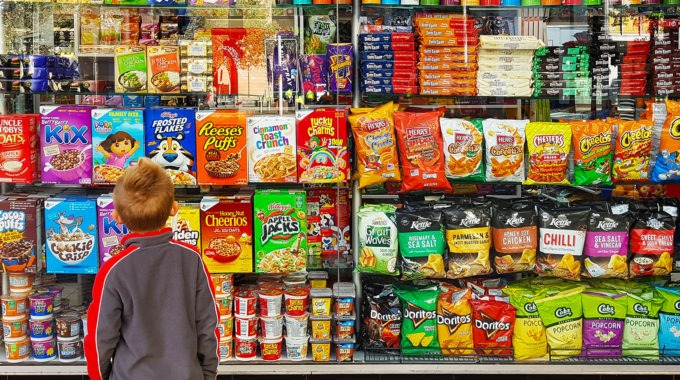Supermarkets get thumbs down on health
Australian supermarkets have been “red-flagged” for unhealthy food promotion in a new national food dashboard designed to track the key drivers of high obesity rates in Australia.
The Food Environment Dashboard gave all major supermarkets a red flag for the way they overpromote, discount, and display foods like lollies, chips, and soft drinks.
Associate Professor Gary Sacks from the Global Obesity Centre, a World Health Organisation Collaborating Centre for Obesity Prevention in Deakin University’s Institute for Health Transformation, says that the places we buy our food heavily influence what we eat.
“Unhealthy diets are leading contributors to poor health in Australia,” he says. “Our diets are bad because unhealthy food is pushed at us wherever we go.”
“It is almost impossible to pay for groceries at Australian supermarkets without being exposed to unhealthy food. Unhealthy products are ‘on special’ almost twice as often as healthy foods. The discounts on unhealthy foods are also much larger.”

Time for action
The Food Environment Dashboard brings together the most up-to-date data from research institutions and government departments to describe the healthiness of Australia’s food environments. The dashboard covers food composition, food affordability and food promotion. It also provides a summary of key indicators of the healthiness of food environments. Traffic light scores indicate which are healthy (green), need improvement (amber) or are unhealthy (red). You can check out the supermarket scorecard here.
“For the first time, we have a really clear picture of all the ways our environment drives us to consume too much of the wrong types of foods,” Sacks says. “It shows the need for much stronger action from all levels of government to create healthier food environments.”

Other important findings from the dashboard
1. Children see an average of 10 ads for unhealthy food each hour they’re online. On TV, kids are exposed to more than double the number of unhealthy food ads as they are to healthy food ads.
2. Almost two-thirds of outdoor food ads promote unhealthy foods. Unhealthy food ads are also more common in the most disadvantaged communities.
3. A healthy diet is simply unaffordable for people on low incomes living in rural or remote areas. In these regions, healthy diets cost more than 30 percent of household income.
To find out more, head to foodenvironmentdashboard.com.au









